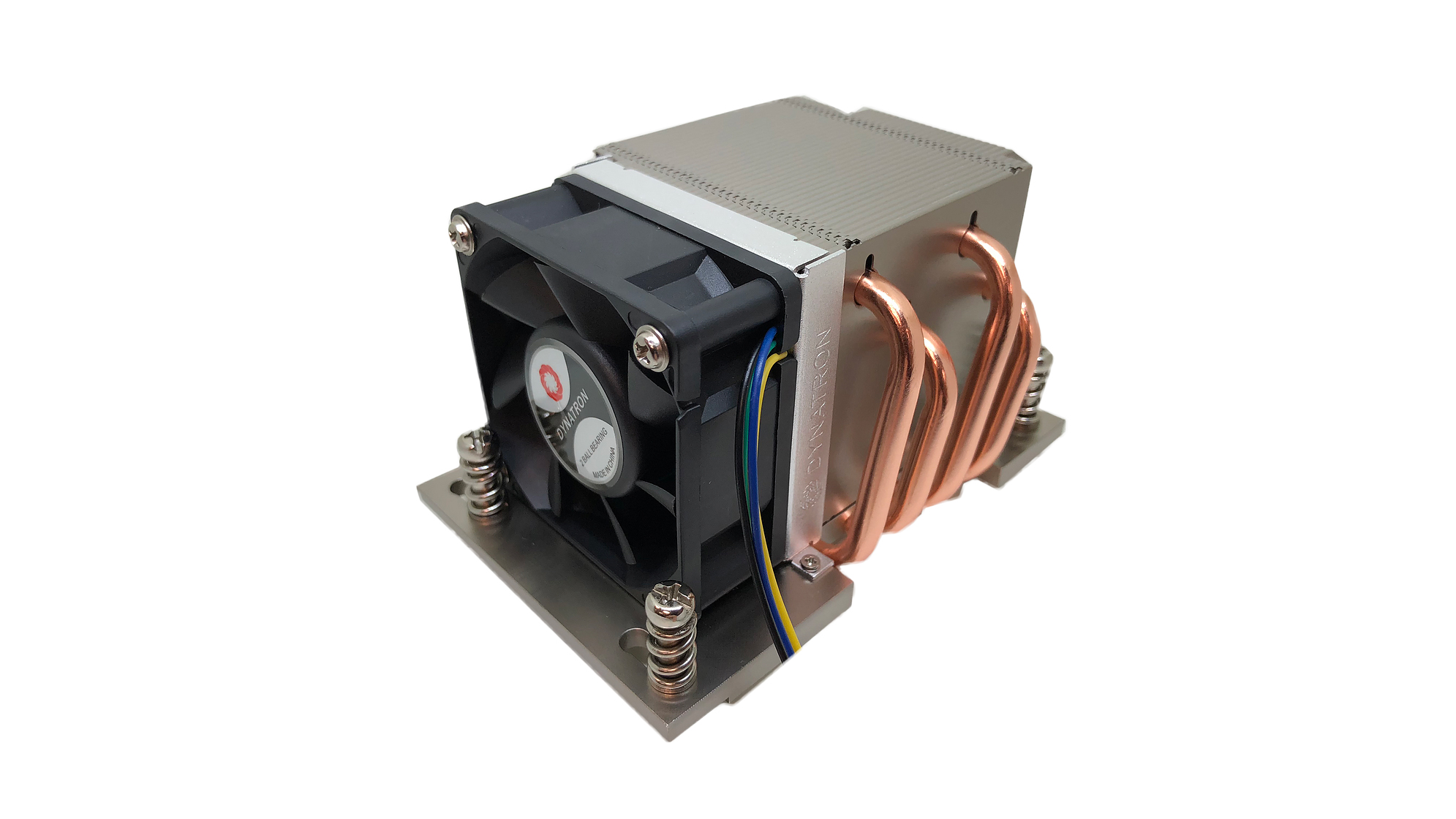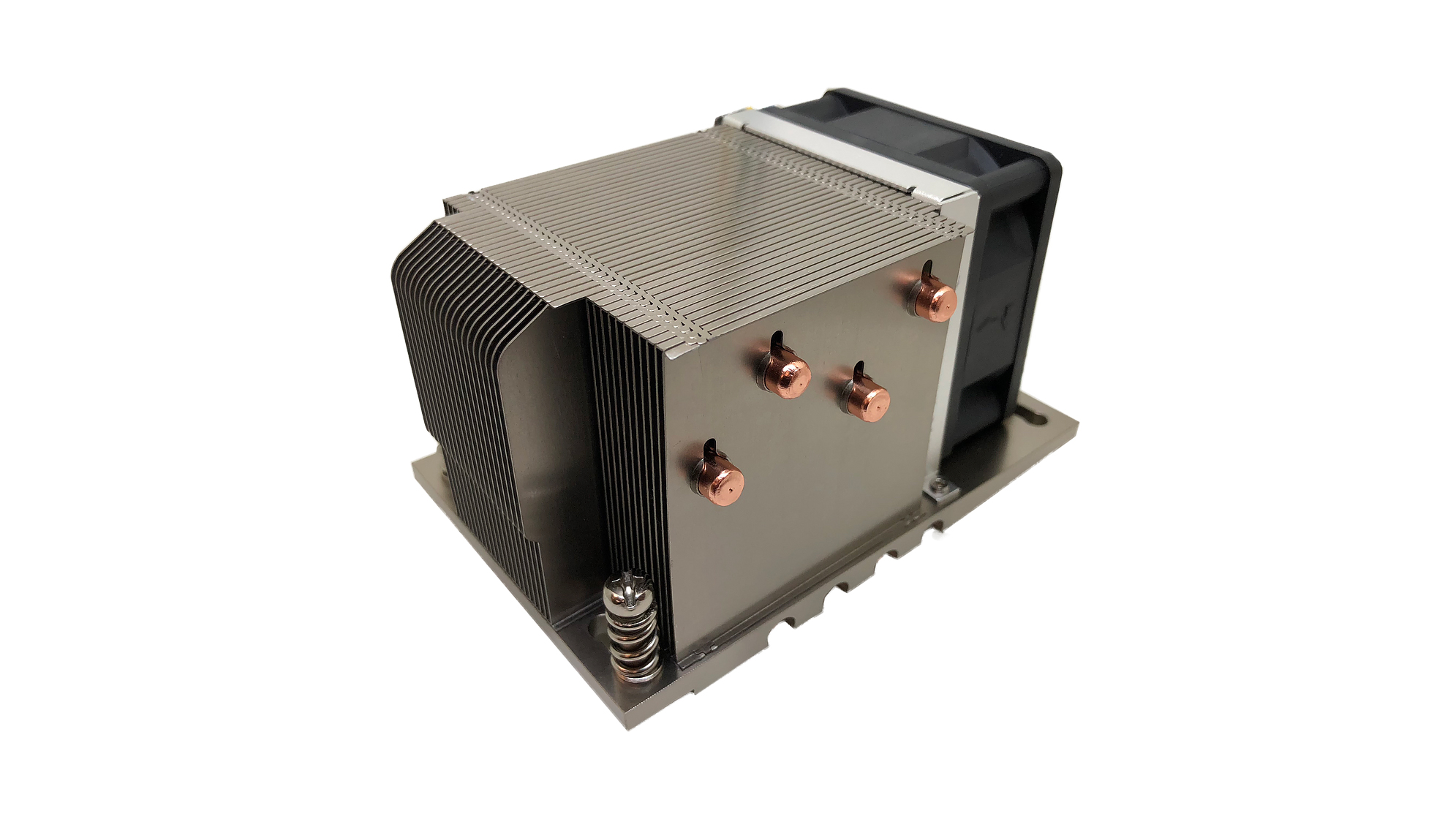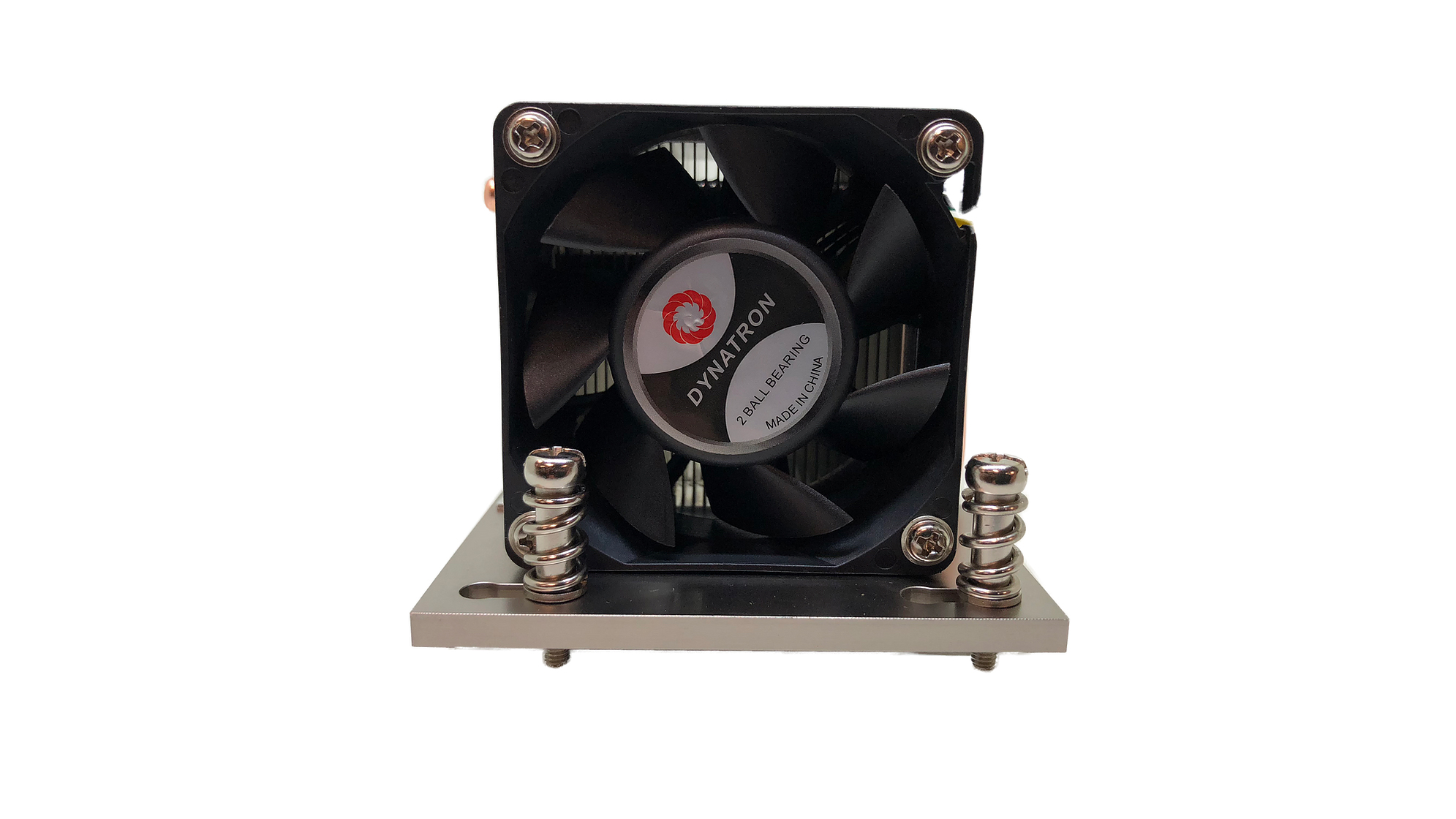Dynatron's EPYC Threadripper CPU Cooler Spins As Fast As A Jet Engine
Dynatron (via Hermitage Akihabara) has cooked up a new CPU air cooler for AMD's core-heavy EPYC and Ryzen Threadripper processors, and it spins at up to 11,000 RPM under full power. It's debatable whether the A38 is good-looking, but the fact of the matter is that it's an industrial-grade cooling solution that will get the job done.
The A38's dimensions are 119 x 79 x 65 mm, so it has the ideal size to be deployed in a 2U server environment. The CPU cooler, which weighs 450g, features a large aluminum heatsink with stacked aluminum fins and four embedded copper heat pipes. According to Dynatron, the A38 can dissipate up to 280W of heat without hiccups. It's compatible with the SP3, TR4, and sTRX4 sockets from AMD.
A 60mm cooling fan (DF126025BU - PWMH) is in charge of providing active cooling on the A38. It leverages a double-ball bearing design and feeds through a standard 4-pin fan connector. Given the size of the fan, it can get a bit loud when you push it to the edge.
With the duty cycle between 0% to 20%, the fan spins around 2,300 RPM and pulls a maximum of 0.84W. At this setting, it generates an airflow and static pressure up to 11.91 CFM and 1.48 mm-H2O, respectively, with a noise level up to 25.8 dBA.




At 50%, the fan speed and power draw jump to 5,400 RPM and 2.76W, respectively. The maximum airflow is increased to 28.38 CFM, while the static pressure is rated for 7.54 mm-H2O. The noise level is still manageable since the fan only hits 44.4 dBA.
For the brave that run the fan at 100%, it'll spin up to 11,000 RPM, and the power draw substantially rises to 18W. Logically, the performance is excellent since the fan provides airflow up to 58.31 CFM and static pressure up to 28.8 mm-H2O. The noise won't cause any hearing loss, but it's very much audible now. Dynatron estimated a noise level of 59.8 dBA, equivalent to a normal conversation.
The mounting mechanism on the A38 consists of pre-fixed spring screws, so you just install the CPU cooler and tighten the screws until they can't go anymore. The surface is also made from aluminum and comes with a high-quality, pre-applied Shin-Etsu X23-7762 thermal compound.
Get Tom's Hardware's best news and in-depth reviews, straight to your inbox.
Dynatron hasn't revealed the pricing or availability for the A38.

Zhiye Liu is a news editor, memory reviewer, and SSD tester at Tom’s Hardware. Although he loves everything that’s hardware, he has a soft spot for CPUs, GPUs, and RAM.
-
BillyBuerger These are definitely meant for server use where the noise won't matter as much. Still wouldn't want to hang around near a rack of servers with these things blaring. But, I do have a couple Dynatron CPU coolers like these on some 2U SuperMicro servers. But in my case, I got them to be more quiet. The heat sink is much more substantial than the stock Intel cooler. Those had to spin up regularly while the Dynatron can keep the fans running slow on the low powered CPUs in these servers. Very different from trying to cool a Threadripper.Reply -
mwestall You do know that jet engines don't spin, right? Turboprops, yes, jets, no. Intakes may, or may not, have impellers, but hey...Reply -
domih My guess is that they are addressing a very small segment where people would use a TR PRO in a server room *&^%$#@!Reply
3960X here: just using a Noctua NH-U14S TR4-SP3, very very good enough and... silent.
A long time ago, for practical reasons not interesting to describe here, I ended up being working inside a server room setting up and testing two racks: a Dell and a NetApp. I spent four days inside the damn room wearing ear plugs and a comfortable sweatshirt. It's no fun. -
InvalidError Reply
Turbo jets do have a bunch (typically 10+) turbo-compressor discs sandwiched between stators to generate high flow at high pressure before the fuel injectors and flame holder that drop airflow to sub-sonic speed for combustion, then the exhaust passes through a couple more disc-stator stages to extract whatever power is needed to run the plane and prop/fan. Lots of spinning things even if most of them are hidden deeper inside the engine.mwestall said:You do know that jet engines don't spin, right? Turboprops, yes, jets, no. Intakes may, or may not, have impellers, but hey... -
InvalidError Reply
Your bathroom fan is likely a little bit bigger than 60mm and blows into a 2-3" exhaust duct instead of a tightly packed fin stack.gargoylenest said:60CFM? My bathroom fan is 90CFM! -
gargoylenest Reply
oh yes, clearly, its about 25cm. I was just stating that it was a lot of air displacement for such a small fan!InvalidError said:Your bathroom fan is likely a little bit bigger than 60mm and blows into a 2-3" exhaust duct instead of a tightly packed fin stack.